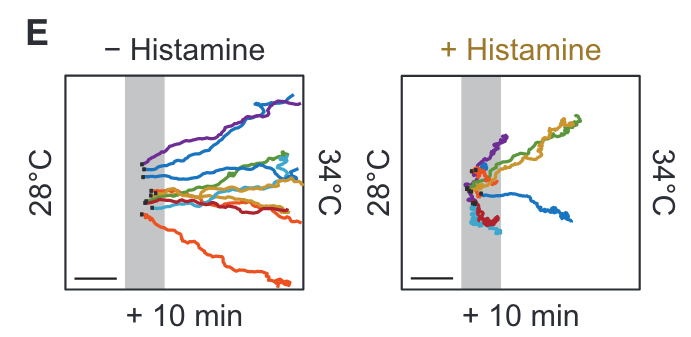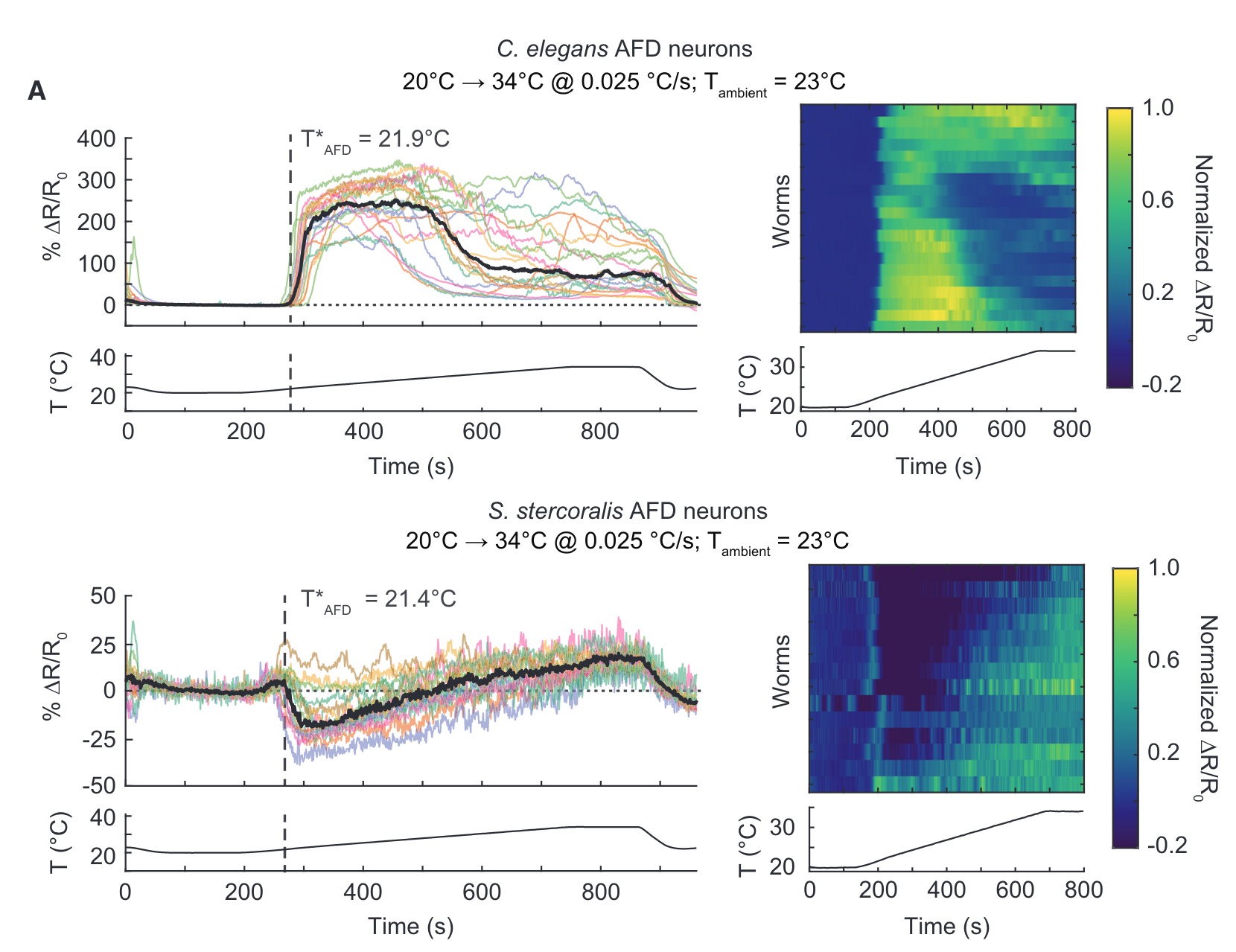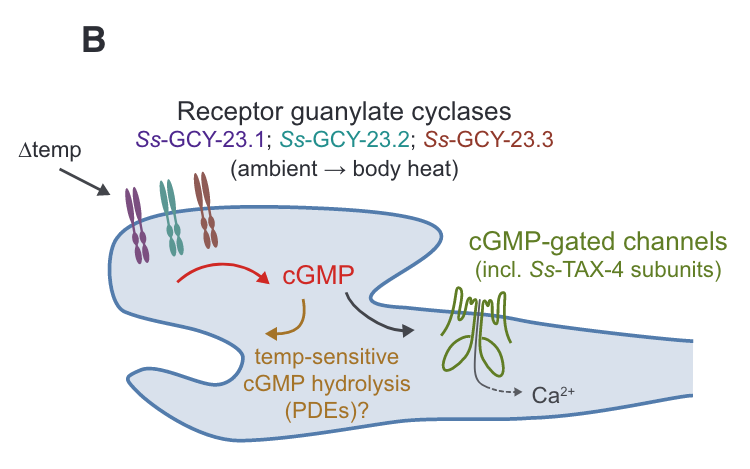The neural basis of heat seeking in a human-infective parasitic worm
authors: Astra S. Bryant, Felicitas Ruiz, Joon Ha Lee, Elissa A. Hallem
doi: 10.1016/j.cub.2022.04.010
CITATION
Bryant, A. S., Ruiz, F., Lee, J. H., & Hallem, E. A. (2022). The neural basis of heat seeking in a human-infective parasitic worm. Current Biology, 32(10), 2206-2221.e6. https://doi.org/10.1016/j.cub.2022.04.010
ABSTRACT
fleeting notes
-
identify the theromsensory neurons in Strongyloides stercoralis
- functional adaptations that enable precise encoding of temp
- flexible behavior of infective larvae to track body temperature or reverse heat attraction at below body temp
-
stercoralis infect at least 600 million people
- fatal for immunosuppressed people
-
infect exclusively at iL3 stage
-
nematode thermosensory neurons detect temperature changes through guanylate cyclase receptors
-
AFD neurons response to heat demonstrates evolutionary adaptation
highlights
“Soil-transmitted gastrointestinal helminths are a major source of neglected disease affecting the world’s most socioeconomically depressed communities.1–8 Although the prevalence of parasitic helminth infections is highest in developing nations, infections persist within impoverished areas of developed nations, including the United States.”Page 2
“repeated dosage with anthelmintics may give rise to drug-resistant parasites”Page 2
“mated to infect at least 610 million people worldwide,”Page 2
“the receptor-type guanylate cyclases (rGCs) GCY-8, GCY-18, and GCY-23 are expressed selectively in C. elegans AFD, contribute to thermosensation via activation of the cyclic guanosine monophosphate (cGMP)-gated cation channels composed of TAX-2 and TAX-4 subunits, and are used as AFD-specific genetic markers.”Page 4
“the genomes of S. stercoralis and S. ratti each contain three putative AFD-rGCs”Page 4
“warming stimuli drove large depolarizations in C. elegans AFD (Ce-AFD) above a response threshold (T*AFD) set near the recently experienced ambient temperature”Page 6
“Ce-AFD monotonically and nonlinearly encoded temperature deviations near the ambient temperature, such that the lowest Ce-AFD response was the baseline response (R0) driven by the coldest temperature in the thermal stimulus (”Page 6
“the Ss-AFD response at T*AFD was dominated by a warming-triggered inhibition, such that the Ss-AFD responses were reduced below the baseline response (i”Page 6
“This warming-triggered inhibition resulted in a negative monotonic relationship”Page 6
“, Ss-AFD responses showed near-linear positive encoding of temperatures ranging from near ambient to above human body temperature”Page 6
“hat the initial reduction in neural activity, achieved via warming-triggered inhibition, effectively ‘‘resets’’ the dynamic range of Ss-AFD”Page 6


